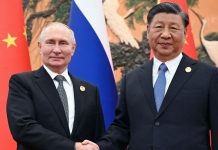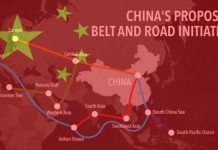
Roughly the size of Europe but home to around twice as many people, China is diverse not only in geography, but also in language, culture and ethnicity. Addressing domestic ethnic affairs in contemporary China is the country’s system of regional ethnic autonomy. This system is administered through five autonomous regions, 30 autonomous prefectures and 120 autonomous counties or banners, which are collectively referred to as ethnic autonomous areas.
The origins of China’s system of regional ethnic autonomy lie in the long history of exchange between its ethnicities, which differs greatly from that of Europe.
The European experience
The concept of national autonomy arose in Europe as a result of the interplay between the quest for national independence and the dominance of imperial rule.
Beginning with the Roman Empire, different linguistic and cultural groups in Europe have been classified using the term “peoples.” In the 10th century, the term “nations” emerged in Latin-speaking areas, and was exclusively used to distinguish peoples born in different places. After the 15th century, the term “nation” gradually evolved into a concept with exclusive political implications, associated with independent countries.
In the later stages of the Enlightenment, to avoid ethnic conflicts, a proposal was made to define “nation-states” based on the historically formed linguistic and cultural homogeneity of “peoples.” At this time, the doctrine of “one people, one nation, one state” was considered by some Europeans to be a fundamental theory of nationalism.
However, this theory faced practical challenges. The establishment of some countries and empires in Europe generally became dominated by ruling classes of powerful ethnic groups, while relatively weaker ethnic groups found themselves in subordinate positions. For these ethnic groups, seeking their own autonomy within countries ruled by other ethnic groups became a fallback choice.
In the 19th century, nationalist political ideas and movements spread from Western Europe to Central and Eastern Europe. This shift prompted nations including Hungary to launch three consecutive wars of independence (in 1848, 1859 and 1866), driven by a desire to liberate themselves from the rule of the Austrian Habsburg Empire.
The challenge then became how to reconcile the contradiction between imperial rule and national independence. Drawing on nationalist theory, which posits that a nation develops from its people and manifests as an independent country, European intellectuals in the 1860s began using “nationalities” to refer to peoples who had not established independent countries. The Austro-Hungarian Empire was the first to officially adopt this concept.
In 1867, the Kingdom of Hungary and the Austrian Habsburg monarchy signed the Ausgleich (compromise), forming the Austro-Hungarian Empire. The Austrian emperor also assumed the title of King of Hungary, but neither Austria nor Hungary was subordinate to the other, and each maintained power over their own respective peoples. This arrangement extended to the dozen or so other ethnic groups, or nationalities, within the empire, marking the origin of national autonomy in Europe. By examining the practice of the Austro-Hungarian Empire, it can be seen that allocating a certain degree of political power to the ruling groups of various nationalities was carried out in exchange for their acceptance of the imperial order. This is the political backdrop of European national autonomy.
However, some ruling groups or dominant forces of certain ethnicities were dissatisfied with the designation and status of “nationality” and constantly sought to mobilize their own peoples under the banner of “nations” to establish independent sovereign states, giving rise to ethnic separatism in Europe. It is these national independence movements that lead to the dissolution of the Austro-Hungarian Empire, and others, after World War I.
Around the turn of the 19th and 20th centuries, European colonial powers also began to offer degrees of this “autonomy” as a compromise to ease conflicts with their colonies. Countries such as Canada, Australia and New Zealand all experienced a period of “autonomy” before gaining independence.
It is because of a certain orientation against imperialism and colonialism during a specific historical period that national autonomy was endowed with a positive significance in European political culture.
China’s approach
China’s concept of regional ethnic autonomy stands in stark contrast to the European model of national autonomy.
The first distinction lies in the definitions of the entity practicing autonomy. China’s system of regional ethnic autonomy integrates ethnic factors with natural and economic geography to establish its autonomous regions (provincial level), autonomous prefectures and autonomous counties/banners with different administrative levels. Each of these areas is home to a diverse mix of ethnic groups. Even in relatively small autonomous counties, there may be as many as 20 or 30 ethnic groups. Moreover, in all ethnic autonomous areas, the Han ethnic group accounts for a certain proportion of the population, and in many places, it even constitutes the majority. Therefore, the autonomous entities or governing bodies naturally comprise people of multiple ethnic groups, rather than being exclusive to any single ethnic group.
It is worth noting that in China, the majority of these areas incorporate the names of one or more ethnic minority groups in their names, such as Guangxi (locality) Zhuang (ethnicity) Autonomous Region, and Dehong (locality) Dai and Jingpo (ethnicities) Autonomous Prefecture in Yunnan Province. But this does not imply that these ethnic autonomous areas belong exclusively to one or a few specific minority ethnic groups.
The second difference lies in the definitions of “autonomy.” In Europe, national autonomy involves a negotiated division of political power between imperial dynasties and rulers of various ethnic groups, packaged as “ethnic political rights.” In China’s practice of regional ethnic autonomy, however, “autonomy” does not refer to the power of a particular ethnic ruling group or the political rights of a specific ethnic group. Instead, it refers to the functions and powers of the public authority in an ethnic autonomous area.
Third, there is a difference in the political systems that safeguard the management of ethnic autonomous areas. In countries practicing Western-style democracy, the establishment of an “ethnic party” is a common phenomenon. This inevitably leads to two situations. First, ethnic parties representing ethnicities with smaller populations may have little impact on national and local political decision making, as seen in some Latin American countries with indigenous ethnic parties or alliances. In such cases, the demands of ethnic minority groups not being met may lead to the escalation of conflicts. Second, in developed regions, ethnic parties representing larger populations, after gaining regional autonomy through the electoral process, often continually demand an expansion of autonomy and local power. This can also lead to an escalation of conflict, including launching “independence referendums” under the pretext of “ethnic democracy,” as observed in Quebec in Canada, Scotland in the United Kingdom and Catalonia in Spain.
China has established a comprehensive national political system and practices socialist people’s democracy. This system includes the system of people’s congresses and the system of Communist Party of China-led multiparty cooperation and political consultation. The administration of China’s ethnic autonomous areas operates within this national political system. On the one hand, it effectively ensures national unity, with ethnic autonomous areas implementing national policies. On the other hand, it can promptly address the legitimate interests and demands of various ethnic groups, while resisting the influence of extreme nationalism and ethnic separatism.
Fourth is the new concept regarding the political rights of ethnic minorities. Those advocating national autonomy invariably consider ethnic political rights to be one of the justifying reasons. Some even go so far as to regard autonomy based on ethnic political units as an embodiment of ethnic equality.
However, when it comes to the political rights of ethnic minorities, people need to break through conceptual constraints of the discourse on “national autonomy.” China’s system of regional ethnic autonomy and its practice undeniably represent a paradigm shift.
In contrast to the “national autonomy” discourse that involves territorial delineation, China’s system of regional ethnic autonomy allows people of all ethnic groups to jointly manage national and local affairs for their own and common interests and wellbeing. The joint management of national and local affairs by all ethnic groups is a new concept for governing multiethnic societies and a new perspective on ethnic political rights that surpasses the limitations of defining the political rights of ethnic minorities as national autonomy. –The Daily Mail-Beijing Review news exchange item





